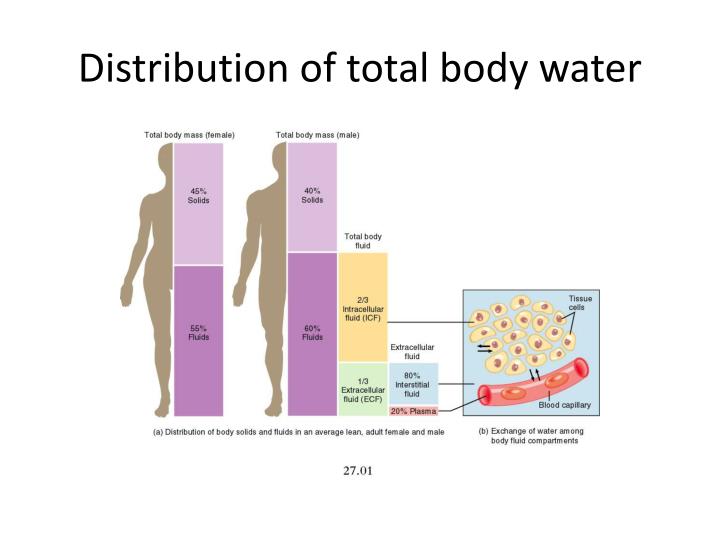

2.1.4 Extracellular FluidĪ similar argument applies to the Extracellular Fluid. The use of this convention allows predictions to be made about what will happen with various interventions and within limits these are physiologically meaningful. Behaviour: Intracellular fluids behave similarly to tonicity changes in the ECFīecause of this physiological usefulness, it is convenient to talk of an idealised ICF as though it were a single real entity.Composition: Intracellular fluids are high in potassium and magnesium and low in sodium and chloride ions.Location: The distinction between ICF and ECF is clear and is easy to understand: they are separated by the cell membranes.In particular, similarities of location, composition and behaviour: How can the term ‘intracellular fluid’ be used as though it was a single body of fluid? The reason is that though not united physically, the collections have extremely important unifying similarities which make the ICF concept of practical usefulness in physiology. The ICF compartment is really a "virtual compartment" considered as the sum of this huge number of discontinuous small collections. The concept of a single united "compartment" called intracellular fluid is clearly artificial. The Intracellular Fluid is composed of at least 10 14 separate tiny cellular packages. Typical values for the size of the fluid compartments are Liters) based on which side of the cell membrane the fluid lies. The major division is into Intracellular Fluid (ICF: about 23 liters) and Extracellular Fluid (ECF: about 19 These collections are referred toĪs "compartments"".

Together into larger collections which can be discussed in a physiologically meaningful way. The water in the body is contained within the numerous organs and tissues of the body. Differences in percent body water between males and females are primarily due to differences in amounts of adipose tissue.įor any particular tissue of the body the variation is very much less but any variation that occurs is still mostly due to differences in amount of fat content. Obese adults have a lower ratio because of the greater amount of adipose tissue. Differences (between individuals) in the amount of bone and plasma are much smaller. The variation between individuals in the ratio of TBW to total body weight is quite large but the majority of the variation is due to different amounts of adipose tissue as adipose has a low water content.

The relative percents of body mass of these are included in the following table.The 70 kg 'standard male' contains 42 liters of water - 60% of his body weight. In humans and related organisms, there are five major body compartments: the blood plasma, interstitial fluids, fat tissues, intracellular fluids, and transcellular fluids, the latter of which includes fluids in the pleural ( peritoneal) cavity. Various multi-compartment models can be used in the areas of pharmacokinetics and pharmacology, in the support of efforts in drug discovery, and in environmental science. This analysis is used in attempts to mathematically describe distribution of small molecules throughout organisms with multiple compartments. Instead, the concept focuses on broad types of fluidic systems. The meaning in this area of study is different from the concept of anatomic compartments, which are bounded by fasciae, the sheath of fibrous tissue that enclose mammalian organs. In pharmacokinetics, a compartment is a defined volume of body fluids, typically of the human body, but also those of other animals with multiple organ systems. Defined volume of body fluids, typically of the human body


 0 kommentar(er)
0 kommentar(er)
